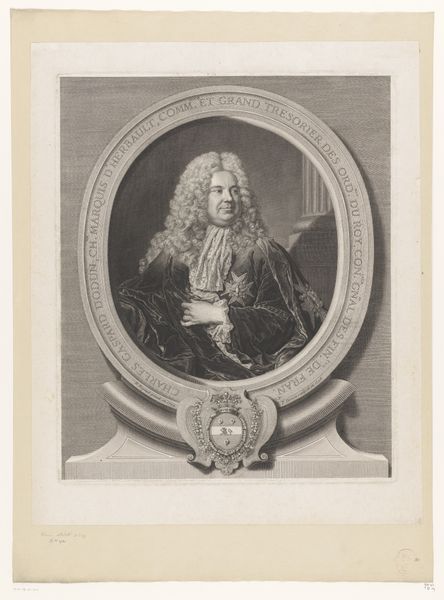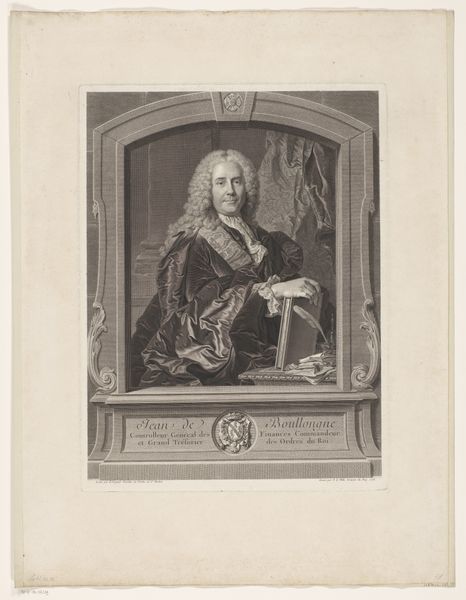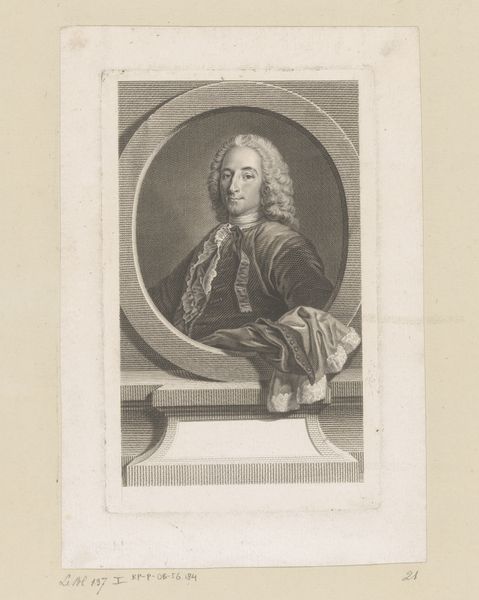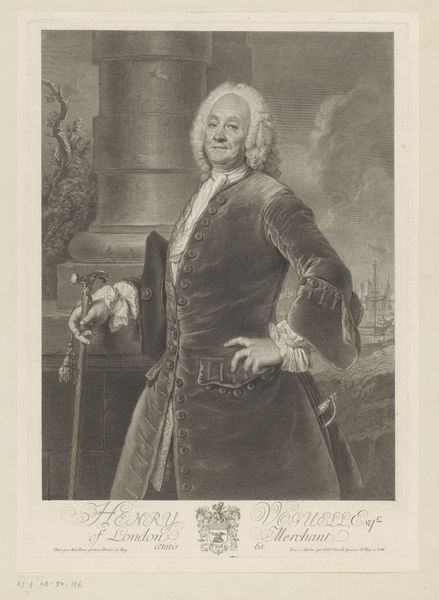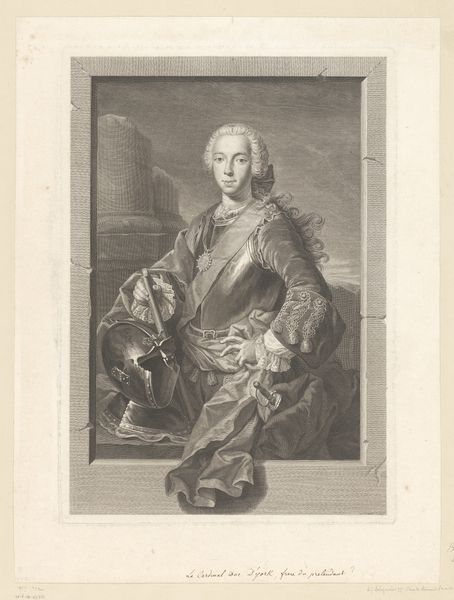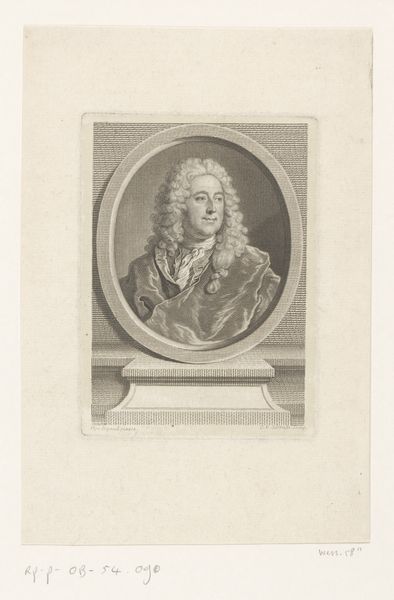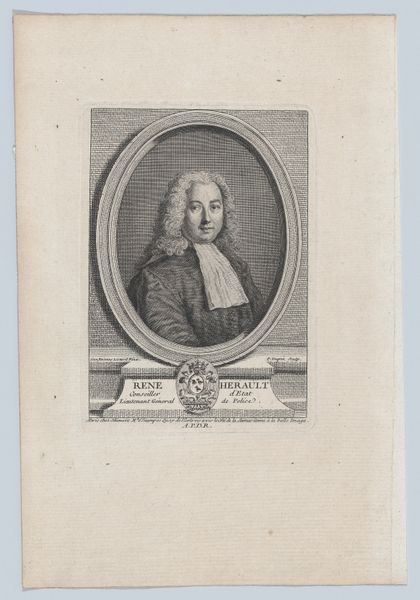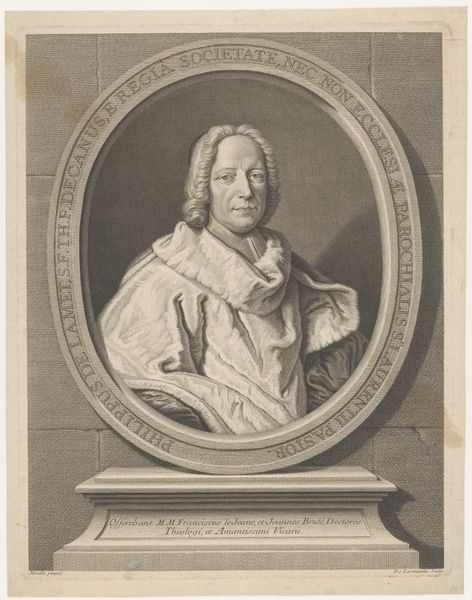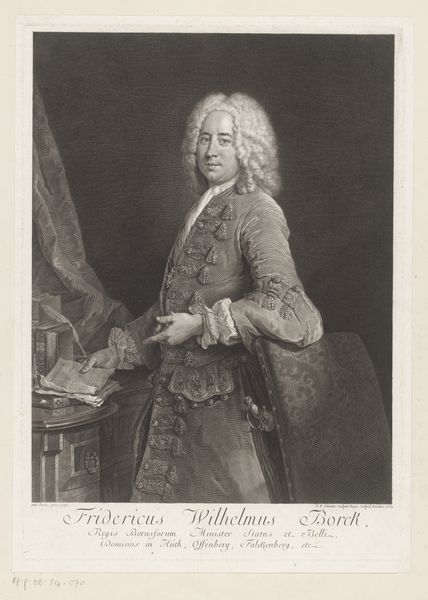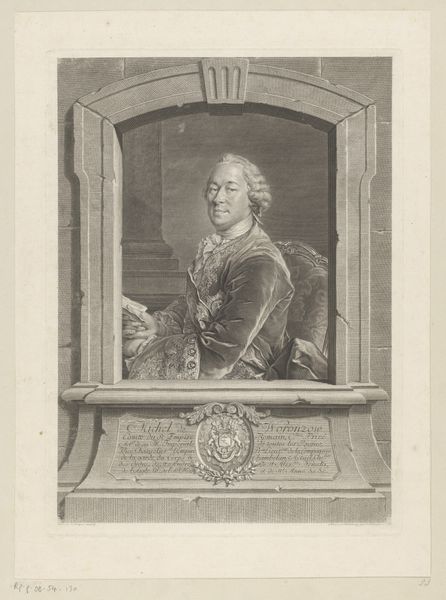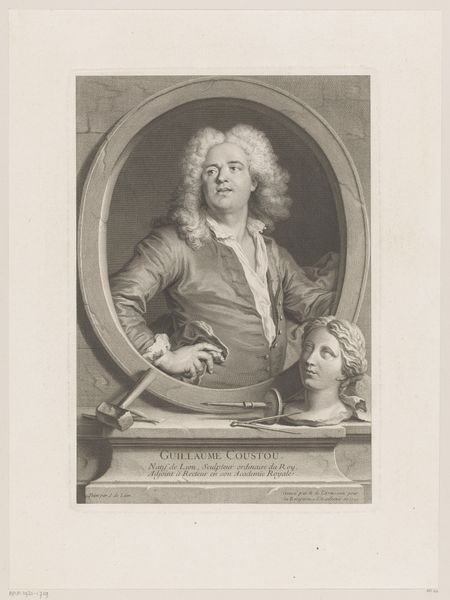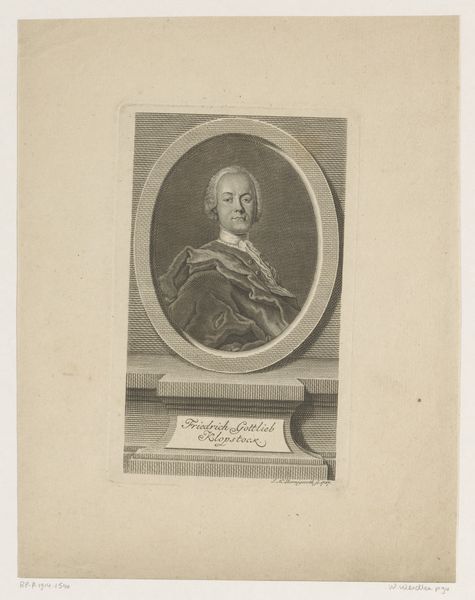
engraving
portrait
baroque
history-painting
engraving
Dimensions: height 370 mm, width 250 mm
Copyright: Rijks Museum: Open Domain
Curator: This is a rather striking portrait. John Faber II created this engraving in 1748, titling it "Portret van John Philipps." Editor: My initial response is one of somewhat detached authority. The sitter’s pose and the severe light cast a serious mood—a sense of absolute control—but something also feels subtly performative, doesn't it? Curator: Precisely. Faber masterfully utilizes the engraving technique, employing a dramatic baroque aesthetic to depict Philipps. Consider the careful etching; the hatching defines the subject’s form, bringing an imposing weight. Editor: But look closely—this weight, this authority, it's also carefully constructed. It is important to think about what this level of representation could mean in terms of both individual and political identity during this era. Notice the emphasis on attire: a symbol of belonging to a privileged social strata, or what it might have meant to portray oneself as a gentleman in a time of rapidly shifting political ideologies. Curator: Indeed, his garments indicate his social rank. And it’s worth noting how Faber's decision to foreground detail draws attention to the man's physical presence. The cascade of his wig, the slight shine on his jacket...it's a detailed exercise in visibility. Editor: Right, visibility—who gets to be seen, and how? That piercing gaze seems designed to solicit your immediate submission. Also, I keep coming back to that pointed finger: at whom, or at what, is this man directing his ambition? It may give an interesting view into gender dynamics and performances of masculinity at the time. Curator: A question to contemplate! I do believe, that from a strictly aesthetic standpoint, it’s a remarkable showcase of engraving. The texture, the lighting—Faber really understood how to push the medium's possibilities. Editor: Absolutely. Understanding those formal choices only enriches our reading of it, especially once we think about art’s function in shaping not only perception but power itself. Thanks for offering such helpful historical and artistic context, It will prompt further research for sure.
Comments
No comments
Be the first to comment and join the conversation on the ultimate creative platform.
